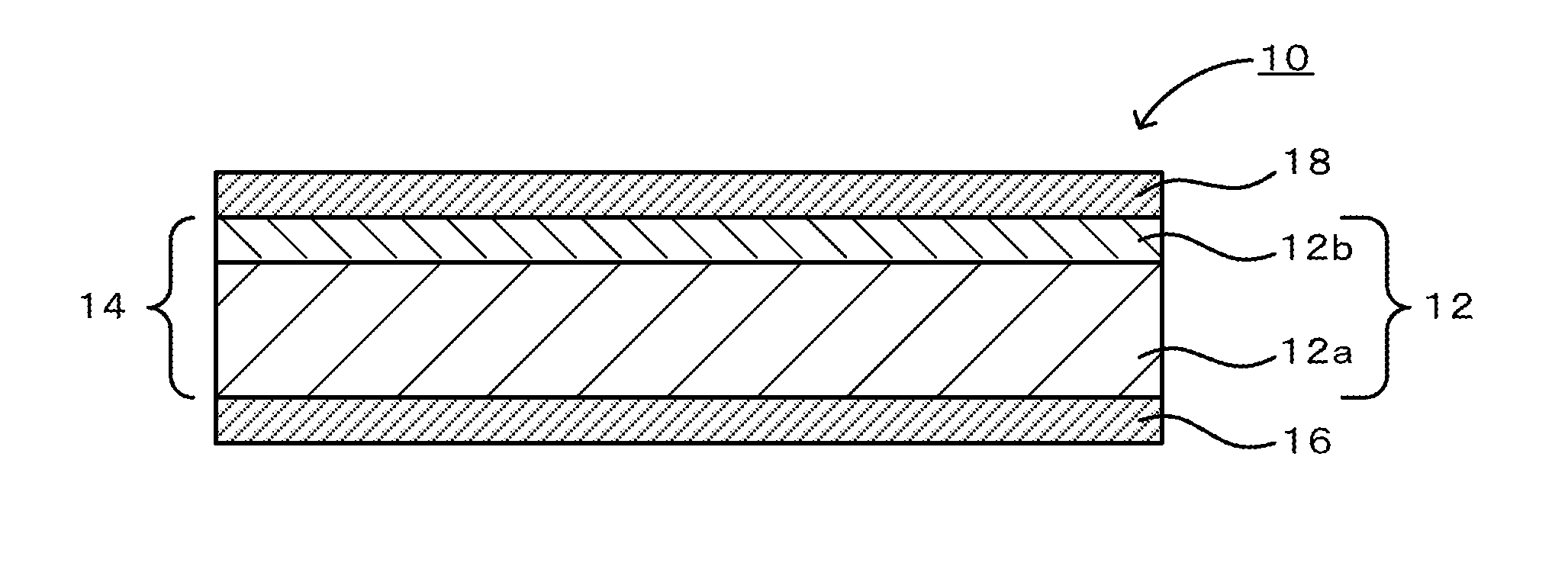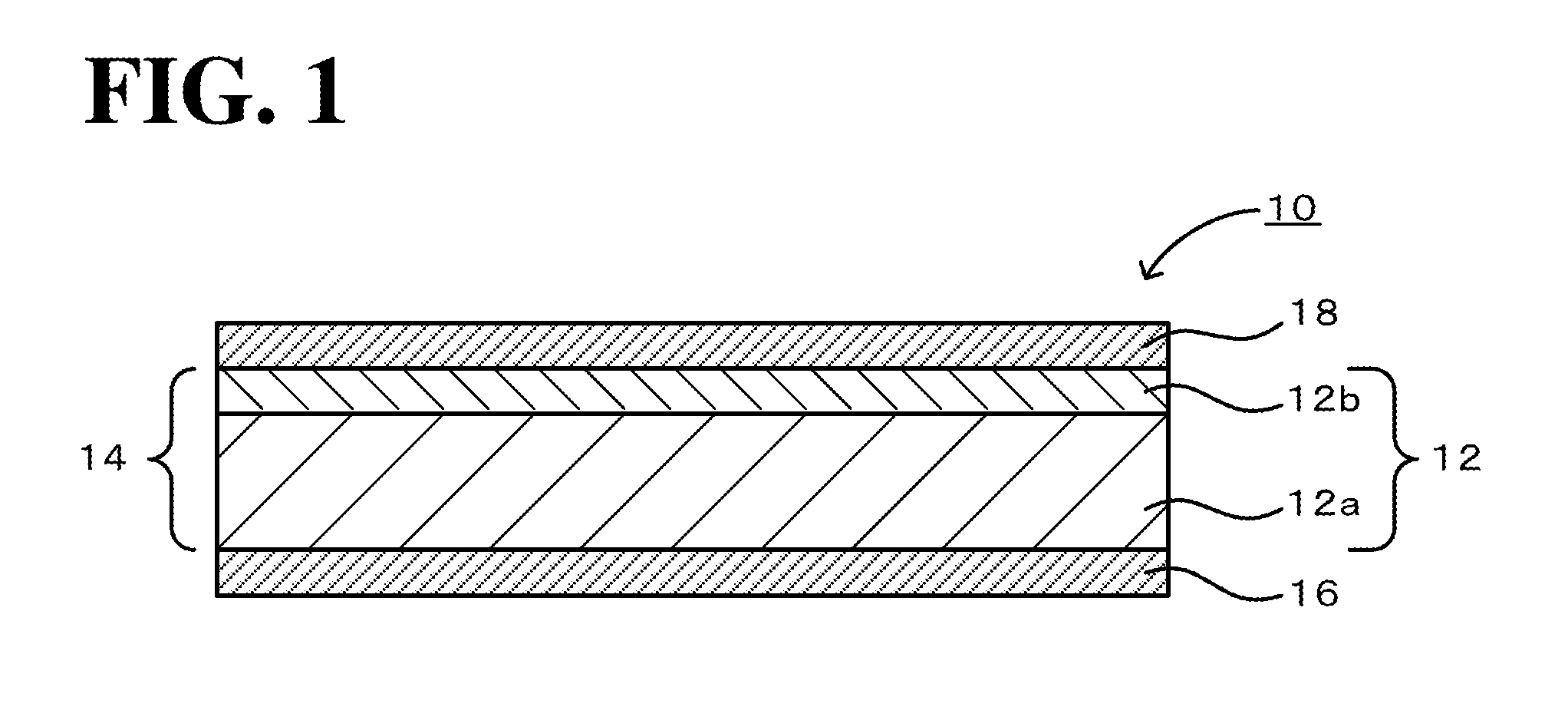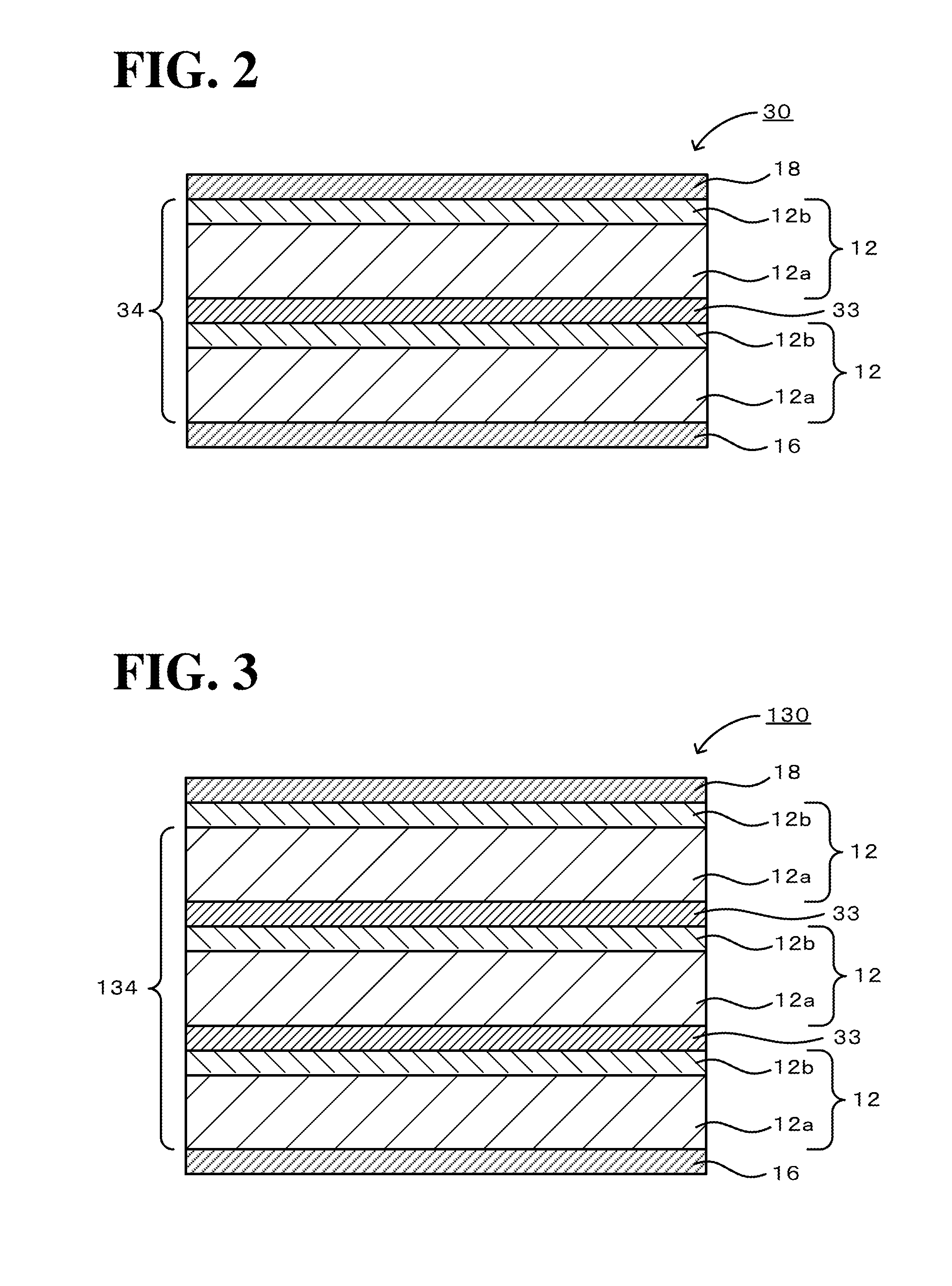Voltage nonlinear resistive element and method for manufacturing the same
a non-linear resistive element and resistive element technology, applied in the direction of varistor cores, basic electric elements, electric instruments, etc., can solve the problem of insufficient resistance of zinc oxide porcelains, and achieve the effect of preventing the volume resistivity of zinc oxide ceramic layers from being increased and being easy to manufactur
- Summary
- Abstract
- Description
- Claims
- Application Information
AI Technical Summary
Benefits of technology
Problems solved by technology
Method used
Image
Examples
example 1
[0050]Zinc oxide (average particle size 1.5 μm) was mixed with 1% by mass θ-alumina (average particle size 0.02 μm). The mixture was shaped to form a compact. The compact was held in a N2 atmosphere at 1100° C. for 5 hours and was then fired at 1400° C. for 5 hours, thereby producing a zinc oxide ceramic block. The zinc oxide ceramic block had a volume resistivity of 9.3×10−4 Ωcm. A 10 mm×10 mm×1 mm zinc oxide ceramic sheet was cut from the zinc oxide ceramic block. After the sheet was polished and washed, a sputtered bismuth oxide film (thickness 0.3 μm) was formed on the zinc oxide ceramic sheet by high-frequency plasma sputtering using a target of bismuth oxide, thereby producing a joined body. RFS-200 manufactured by ULVAC KIKO, Inc. was used for sputtering. The deposition conditions were as follows: target size: 80 mm in diameter, RF output: 20 W, gas pressure (Ar): 2.0 Pa, deposition time: 15 minutes.
[0051]The joined body was directly used as a resistor. An Al vapor deposition...
example 2
[0052]A zinc oxide ceramic block was produced in the same manner as in Example 1 except that zinc oxide was mixed with 2% by mass θ-alumina. The zinc oxide ceramic block had a volume resistivity of 1.1×10−4 Ωcm. A 10 mm×10 mm×1 mm zinc oxide ceramic sheet was cut from the zinc oxide ceramic block. The sheet is used to produce a joined body in the same manner as in Example 1. The joined body was directly used as a resistor. An Al vapor deposition electrode was formed on both sides of the resistor. Thus, a voltage nonlinear resistive element was manufactured. Electric current-voltage characteristics were measured by applying a voltage between the electrodes of the voltage nonlinear resistive element in the same manner as in Example 1. Table 1 and FIG. 6 show the results. The clamping voltage at an electric current corresponding to 1 mA / cm2 was 2.7 V, and the clamping voltage at an electric current corresponding to 20 A / cm2 was 3.4 V.
example 3
[0057]Two joined bodies were prepared in the same manner as in Example 2. A zinc oxide ceramic sheet of one of the joined bodies was brought into contact with a sputtered bismuth oxide film of the other of the joined bodies with a Au—Ge alloy (the mass ratio of Au / Ge=88 / 12) foil (thickness 50 μm) interposed therebetween. The joined bodies in this state were joined by heat treatment in an inert atmosphere at 420° C. for 10 minutes, thereby producing a layered resistor. An Al vapor deposition electrode was formed on both sides of the resistor. Thus, a voltage nonlinear resistive element was manufactured (see FIG. 2). Electric current-voltage characteristics were measured by applying a voltage between the electrodes of the voltage nonlinear resistive element. The electrode on the zinc oxide ceramic sheet was an anode, and the electrode on the sputtered film was a cathode. As a result, although not shown in the figure, the voltage nonlinear resistive element had the voltage nonlinear re...
PUM
| Property | Measurement | Unit |
|---|---|---|
| volume resistivity | aaaaa | aaaaa |
| temperature | aaaaa | aaaaa |
| temperature | aaaaa | aaaaa |
Abstract
Description
Claims
Application Information
 Login to View More
Login to View More - R&D
- Intellectual Property
- Life Sciences
- Materials
- Tech Scout
- Unparalleled Data Quality
- Higher Quality Content
- 60% Fewer Hallucinations
Browse by: Latest US Patents, China's latest patents, Technical Efficacy Thesaurus, Application Domain, Technology Topic, Popular Technical Reports.
© 2025 PatSnap. All rights reserved.Legal|Privacy policy|Modern Slavery Act Transparency Statement|Sitemap|About US| Contact US: help@patsnap.com



